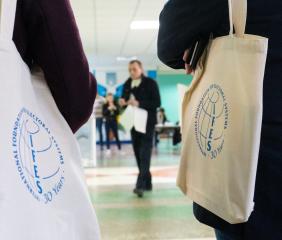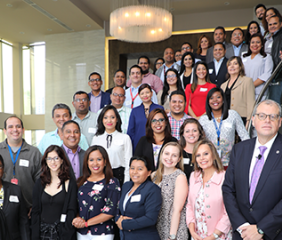Tools & Resources
Filter by
Type
Publication date
Language
Type
Publication date
Language
Election Material
Election and Political Party Law
1990, No 4, An Act to Provide for The Taking of Polls in No-Licence Districts
1990, No 4, An Act to Provide for The Taking of Polls in No-Licence Districts
Election Material
Civic Education Material
Speaker's Placards
This document entitled “Speaker’s Placards” from 1997 provides 8 potential designs focusing on aspects of the Mixed Member Proportional system of electing New Zealand’s parliament as well as New Zealand recent election information to be displayed on billboard-type material after approval.
Election Material
Civic Education Material
The Guide to the Electoral Referendum
“The Guide to the Electoral Referendum” was published by the Electoral Referendum Panel in 1992 and regards the September 19th 1992 vote in which a system of elections will be chosen to challenge the existing voting system. In addition to a brief history of New Zealand’s electoral history and a voting procedure outline, this guide outlines the different potential electoral system and provides their implications on New Zealand politics. These systems are the Mixed Member Proportional System, the Preferential Voting System, the Supplementary Member System and the Single Transferable Vote System.
Election Material
Civic Education Material
MMP and the Economy
“MMP and the Economy” is a pamphlet published in 1993 by the Electoral Reform Coalition (ERC) which argues for the implementation of the Mixed Member Proportional proposed system of electing members of the New Zealand parliament. This pamphlet rejects the assertion that such a system would lead to economic ruin, arguing instead that the MMP would actually promote government stability. This ERC pamphlet also leaves readers the opportunity to donate money to the campaign to implement the MMP system into New Zealand.
Election Material
Civic Education Material
MMP : Voting for Party Lists
Published in 1993 by the Electoral Reform Coalition in New Zealand, “MMP: Voting for Party Lists” advocates for the implementation of the Mixed Member Proportional system of electing New Zealand’s members of parliament on the basis that it provides more freedom for citizens to inflict change in government policy. Basic questions about the party lists are provided as well as further reasons for the implementation of the MMP system including increased voter freedom, flexibility, and fair elections.
Election Material
Civic Education Material
The Referendum. The Guide.
Published by the Electoral Referendum Panel of New Zealand in 1993, “The Referendum, the Guide” serves as an informative document to New Zealand voters comparing the existing system of electing members of parliament (First-Past-the-Post System) against the newly proposed system (Mixed Member Proportional System). This document also provides information on the effect of each system on minor parties, New Zealand policy, and Maori representation. Further information on candidates and electorate boundaries is also included.
Election Material
Election and Political Party Law
1993, No 87, Electoral Analysis
1993, No 87, Electoral Analysis
Election Material
Civic Education Material
What is MMP?
Published in 1993 by the Electoral Reform Coalition in New Zealand, “What is MMP?” advocates for the implementation of the Mixed Member Proportional system of electing New Zealand’s members of parliament. This leaflet provides five reasons for advocating the MMP system and includes a space for donations to the ERC in order to fund the implementation of MMP.
Election Material
Civic Education Material
What is PR? What is MMP?
This brief brochure entitled “What is PR? What Is MMP?” was published in 1993 by the Electoral Reform Coalition in New Zealand. It highlights the differences between the Proportional Representation and the Mixed Member Proportional systems of electing New Zealand parliamentary members. These differences arise in areas such as fairness, simplicity, and effects on stability in the government and in national policy.
Election Material
Civic Education Material
Why you should vote for MMP
“Why you should vote for MMP” is a leaflet produced by the Electoral Reform Coalition in New Zealand in 1993 that provides 5 reasons to vote for the implementation of the Mixed Member Proportional system of electing New Zealand’s members of parliament. Reasons include fairness of the system, equal worth of each vote, and greater individual influence on the election result.



